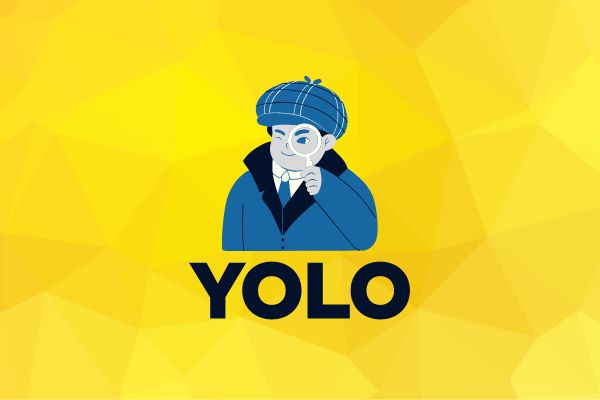Computer vision is the study of how computers can extract high-level information from digital images or videos. Object detection is a computer vision technique that enables us to recognize and locate objects in images or videos.
In this article, let’s look at one of the best object detection algorithms, YOLO (You Only Look Once).
What is YOLO?
You only look once (YOLO) is a detection algorithm for images. It was initially built with the Darknet framework. It is said to be the most famous and fastest algorithm in the field of computer vision, and it has almost become a standard method of detecting objects.
It has a processing speed of 45 frames per second. YOLO, YOLOv2, YOLOv3, YOLOv5, YOLOv6, and YOLOv7 are the various versions of it.
Wow, isn’t that interesting? Let us now go over these models in depth.
Other detectors, in general, scan different parts of the image repeatedly (object identification). The repurposed image is then classified (object classification). It goes through two stages, which is called a two-stage detector system. This requires a lot of time.
However, things quickly changed after the arrival of YOLO. As the name implies, it scans the entire image in one step, divides it into grids, and detects objects within each grid. As a result, it is a one-stage detector that handles object identification and classification simultaneously.

What is YOLOv6?
In this article, let’s look at YOLOv6, an unofficial YOLO version. MT-YOLOv6, also known as YOLOv6, is a new YOLO model developed by Meituan researchers (A Chinese e-commerce platform).
This is named YOLOv6 because it was inspired by the YOLO one-stage algorithms. This model was created to address the flaws of previous models such as YOLOv5.
The structure of YOLOv6 differs from that of previous versions. In general, the structure is made up of a backbone that provides a map representation of the input. It also has a neck, which extracts the complex features of the input. Finally, the output is computed by the head.
In YOLOv6, we use the EFFICIENTrep backbone, which can make use of hardware computing power such as GPU. And the neck in this version, known as the Rep-PAN Neck, is more accurate and faster. The head is decoupled, which means there is a layer between the network and the final head, which improves performance.
Because of these structural modifications, YOLOv6 is remarkably fast and offers other advantages that the earlier versions lacked.
Significance of YOLOv6
What makes YOLOv6 unique?
- The best OS version for the YOLO architecture is YOLOv6, which performs better than YOLOv5 in terms of detection accuracy and inference speed.
- For single image inference, YOLOv6s outperform all previous versions of YOLOv5, with approximately 2x faster inference time.
- YOLOv6 produces better video inference results across the entire FPS spectrum.
Performance Comparison of YOLOv6 and Previous Models
The primary difference between the two is that, for flexibility, YOLOv5 makes use of YAML while YOLOv6 defines the model parameters directly in Python. MT-YOLOv6 lacks stability compared to YOLOv5, but it makes up for that with impressive capabilities in small object detection in densely packed environments.
In terms of accuracy, it was discovered that YOLOv5 outperforms YOLOv4 and YOLOv3. YOLOv3 had a faster detection speed than YOLOv4 and YOLOv5, and the detection speeds of YOLOv4 and YOLOv5 were identical.
Real-life Applications of YOLOv6
The real-world application of the YOLO Model can greatly benefit numerous organizations. It has a huge impact on retail, industrial, and commercial areas.
Because YOLO is extremely fast, it aids industries in detecting things such as vehicle detection in transportation, public detection in security, autonomous driving, and many more
Issues With YOLOv6
Except for a very small number, YOLOv6 doesn’t have many problems. They are as follows:
- MT-YOLOv6 lacks stability
- YOLOv5 was found to be more customizable than YOLOv6.
- Additionally, it can still handle higher frame rates and high-quality video inputs, making it faster during training and prediction.
- In comparison to YOLOv5, YOLOv6 is slightly more difficult to use.
Amazingly, the newer versions of the series always tried to improve, to make even better versions than the previous ones. As a result, we have YOLOv7.
Final Thoughts
YOLOv6 is one of the most exciting OSDS projects. It shows early promise in the evaluation and performs well on custom data. YOLOv6 delivers state-of-the-art results with significant improvement over previous YOLO versions on all fronts.
Even though YOLOv6 was a game changer, it did not last long due to the arrival of YOLOv7. I hope you found this article helpful. Happy coding!

